
How liquid asset secured financing helps with cash flow

Commercial real estate in 2020: Keeping up with the pace of change

Hybridization driving demand

The startup scene in Reno: The story of Breadware

The startup scene in Reno: Emerging tech leads the way

What is a CLO?

An investor’s guide to marketplace lending

Beyond Mars, AeroVironment’s earthly expansion fueled by U.S. Bank

Refinancing your practice loans: What to know

What type of loan is right for your business?

Finance or operating lease? Deciphering the legalese of equipment finance

Common pitfalls to avoid in the equipment financing process

Buying or leasing? Questions to ask before signing a contract

ABL mythbusters: The truth about asset-based lending

Can ABL options fuel your business — and keep it running?

When small companies buy big: The potential of asset-based lending

Collateral options for ABL: What’s eligible, what’s not?

Maximizing your infrastructure finance project with a full suite trustee and agent

Integrating regulated and unregulated debt investment vehicles

How to maximise your infrastructure finance project

Private equity and the full-service administrator

The secret to successful service provider integration

Insource or outsource? 10 considerations
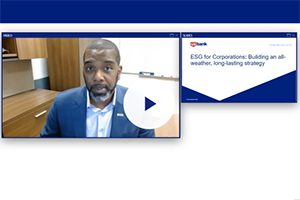
Webinar: ESG for Corporations: Building an all-weather, long-lasting strategy

Evaluating interest rate risk creating risk management strategy

Tech tools to keep your restaurant operations running smoothly

Unexpected cost savings may be hiding in your payment strategy

COVID-19 safety recommendations: Are you ready to reopen?

Safeguarding the payment experience through contactless

Changes in credit reporting and what it means for homebuyers

What’s the difference between Fannie Mae and Freddie Mac?

Tech lifecycle refresh: A tale of two philosophies

4 benefits of independent loan agents

Middle-market direct lending: Obstacles and opportunities

At your service: outsourcing loan agency work

Tailor Ridge eBill case study

ABCs of ARP: Answers to American Rescue Plan questions for counties

5 steps to take before transitioning your business

How to sell your business without emotions getting in the way

10 tips on how to run a successful family business

The moment I knew I’d made it: The Cheesecakery

How entrepreneurs can plan for what matters most

Streamline operations with all-in-one small business financial support

Tools that can streamline staffing and employee management

How iPads can help increase efficiency in your salon

How I did it: Turned my side hustle into a full-time job

Talent acquisition 101: Building a small business dream team

Planning for restaurant startup costs and when to expect them

Make your business legit

Opening a business on a budget during COVID-19

How to identify what technology is needed for your small business

How to fund your business without using 401(k) savings

The different types of startup financing

How to test new business ideas

How to establish your business credit score

How to get started creating your business plan

How to redefine challenges with business collaboration

Costs to consider when starting a business

What is needed to apply for an SBA loan

The costs of hiring a new employee

How small businesses are growing sales with online ordering

How to expand your business: Does a new location make sense?

Common small business banking questions, answered

3 signs it’s time for your business to switch banks

What kind of credit card does my small business need?

Using merchant technology manage limited staffing

Do I need a credit card for my small business?

How a small business is moving forward during COVID-19

When to consider switching banks for your business

How to choose the right business savings account

Prioritizing payroll during the COVID-19 pandemic

How jumbo loans can help home buyers and your builder business

5 tips to help you land a small business loan

5 questions business owners need to consider before taking out a loan

8 Ways for small business owners to manage their cash flow

Do you need a business equipment loan?

How to establish your business credit score

How to make the most of your business loan

Leverage credit wisely to plug business cash flow gaps

How to accept credit cards online

Investing in capital expenditures: What to discuss with key partners

How to build a content team

Multigenerational household financial planning strategies

How to manage money tips

LGBTQ+ financial planning tips

5 financial goals for the new year

Year-end financial checklist

How to track your spending patterns

How to manage your money: 6 steps to take

Do I need a financial advisor?

How to manage your finances when you're self-employed

Reviewing your beneficiaries: A 5-step guide

Good debt vs. bad debt: Know the difference

4 reasons estate planning is important

How to talk about money with your family

Financial steps to take after the death of a spouse

6 tips for trust fund distribution to beneficiaries

How to protect your digital assets in your estate plan

Estate planning documents: Living trusts vs. will vs. living will

4 tips to help you save for retirement in your 20s

How to build wealth at any age

Retirement income planning: 4 steps to take

5 unexpected retirement expenses

How to retire happy

Retirement planning in the gig economy

Key milestone ages as you near and start retirement

Retirement planning strategies for dual-income families

Preparing for retirement: 8 steps to take

LGBTQ+ retirement planning: What you need to know

The connection between your health and financial well-being

7 things to know about long-term care insurance

8 steps to choosing a health insurance plan

Is a Health Savings Account missing from your retirement plan?

3 types of insurance you shouldn’t ignore

What is Medicare? Understanding your coverage options

Working after retirement: Factors to consider

How I did it: Switched career paths by taking an unexpected pivot

5 tips for being a great board member

How I did it: Transitioned from the military to a private sector career

How I did it: Joined a board of directors

4 steps to finding a charity to support

7 year-end tax planning tips

Should I itemize my taxes?

Do your investments match your financial goals?

How to start investing to build wealth

Investment strategies by age

Can fantasy football make you a better investor?

A beginner's guide to investing

Tips for navigating a medical hardship when you’re unable to work

How to plan and save for adoption and in vitro fertility treatment costs

11 essential things to do before baby comes

Closing on a house checklist for buyers

Checklist: 10 questions to ask your home inspector

What you need to know as the executor of an estate

What documents do you need after a loved one dies?

Resources for managing financial matters after an unexpected death

Student checklist: Preparing for college

Webinar: Uncover the cost: College diploma

Co-signing 101: Applying for a loan with co-borrower

How I did it: Paid off student loans

Practical money skills and financial tips for college students

How to build credit as a student
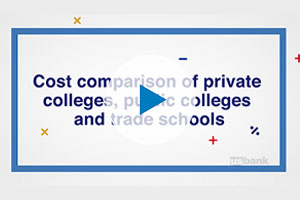
Webinar: Bank Notes: College cost comparison

The A to Z’s of college loan terms

Annual insurance review checklist

From LLC to S-corp: Choosing a small business entity

How you can prevent identity theft

5 tips for creating (and sticking to) a holiday budget

Is raising backyard chickens a good idea financially?

6 pandemic money habits to keep for the long term

Friction: How it can help achieve money goals

Your 4-step guide to financial planning

How I did it: Learned to budget as a single mom

What military service taught me about money management

Webinar: Uncover the cost: Wedding

Webinar: Uncover the cost: International trip

Adulting 101: How to make a budget plan

How having savings gives you peace of mind

What’s your financial IQ? Game-night edition

Personal loans first-timer's guide: 7 questions to ask

Tips to overcome three common savings hurdles

3 awkward situations Zelle can help avoid

Webinar: Mindset Matters: How to practice mindful spending

How to save money while helping the environment

How can I help my student manage money?

U.S. Bank asks: Do you know your finances?

Do you and your fiancé have compatible financial goals?

Common unexpected expenses and three ways to pay for them

U.S. Bank asks: Transitioning out of college life? What’s next?

Which is better: Combining bank accounts before marriage — or after?

Personal finance for teens can empower your child

Don’t underestimate the importance of balancing your checking account

9 simple ways to save

Is it time to get a shared bank account with your partner?

How to save for a wedding

It's possible: 7 tips for breaking the spending cycle

Here’s how to create a budget for yourself

Multiple accounts can make it easier to follow a monthly budget

7 steps: How couples and single parents can prepare for child care costs

5 reasons why couples may have separate bank accounts

Dear Money Mentor: How do I set and track financial goals?

Tips for working in the gig economy

Lost job finance tips: What to do when you lose your job

Money management guide to financial independence

Money Moments: 8 dos and don’ts for saving money in your 30s

5 tips to use your credit card wisely and steer clear of debt

30-day adulting challenge: Financial wellness tasks to complete in a month

Money Moments: 3 smart financial strategies when caring for aging parents

7 financial questions to consider when changing jobs

Money Moments: How to manage your finances after a divorce

What’s in your emergency fund?

Travel for less: Smart (not cheap) ways to spend less on your next trip

How to stop living paycheck to paycheck post-pay increase

What you need to know about renting

What financial advice would you give your younger self?

Understanding guardianship and power of attorney in banking

Financial gifts can be a valuable – and fun – choice for the holidays

It’s time for a fresh start: A new way of thinking

How to open and invest in a 529 plan

Is a home equity loan for college the right choice for your student

Your financial aid guide: What are your options?

Parent checklist: Preparing for college

How grandparents can contribute to college funds instead of buying gifts

Using 529 plans for K-12 tuition

How to apply for federal student aid through the FAFSA

Be careful when taking out student loans

Everything you need to know about consolidating debts

5 tips to use your credit card wisely and steer clear of debt

How to use credit cards wisely for a vacation budget

5 steps to selecting your first credit card

What’s a subordination agreement, and why does it matter?

Know your debt-to-income ratio

How to use debt to build wealth

Understanding the true cost of borrowing: What is amortization, and why does it matter?

Your quick guide to loans and obtaining credit

7 steps to keep your personal and business finances separate

Dear Money Mentor: What is cash-out refinancing and is it right for you?

Overcoming high interest rates: Getting your homeownership goals back on track

Dear Money Mentor: How do I begin paying off credit card debt?

For today's homebuyers, time and money are everything

Should you buy a house that’s still under construction?

Crypto + Homebuying: Impacts on the real estate market

House Hacks: How buying an investment property worked as my first home

Your guide to breaking the rental cycle

What are conforming loan limits and why are they increasing

Webinar: Uncover the cost: Building a home

Military homeownership: Your guide to resources, financing and more

How I did it: My house remodel

How I did it: Bought a home without a 20 percent down payment

Money Moments: How to finance a home addition

Home buying myths: Realities of owning a home

Money Moments: Tips for selling your home

4 ways to free up your budget (and your life) with a smaller home

What is a home equity line of credit (HELOC) and what can it be used for?

10 ways to increase your home’s curb appeal

10 questions to ask when hiring a contractor

Beyond the mortgage: Other costs for homeowners

5 things to avoid that can devalue your home
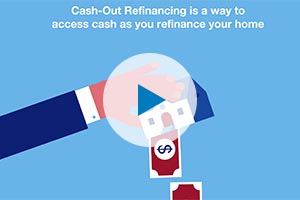
Webinar: Mortgage basics: What is refinancing, and is it right for you?

Should you get a home equity loan or a home equity line of credit?

These small home improvement projects offer big returns on investment
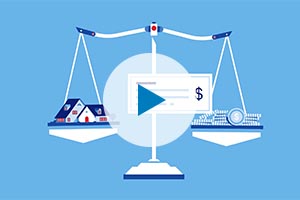
Webinar: Mortgage basics: How much house can you afford?

Webinar: Mortgage basics: Prequalification or pre-approval – What do I need?

Is it the right time to refinance your mortgage?

What is refinancing a mortgage?

What to know when buying a home with your significant other
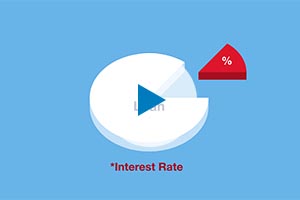
Webinar: Mortgage basics: What’s the difference between interest rate and annual percentage rate?
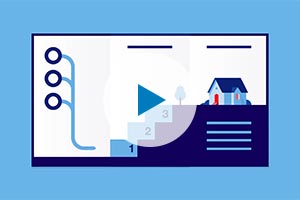
Webinar: Mortgage basics: 3 Key steps in the homebuying process

How do I prequalify for a mortgage?
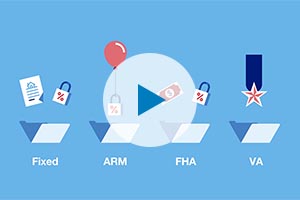
Webinar: Mortgage basics: Finding the right home loan for you

Webinar: Mortgage basics: Buying or renting – What’s right for you?
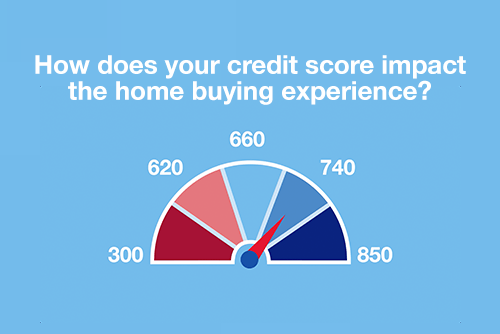
Webinar: Mortgage basics: How does your credit score impact the homebuying experience?

Is a home equity line of credit (HELOC) right for you?

Can you take advantage of the dead equity in your home?

How to use your home equity to finance home improvements

4 questions to ask before you buy an investment property

10 uses for a home equity loan

8 steps to take before you buy a home

6 questions to ask before buying a new home

How to spot a credit repair scam
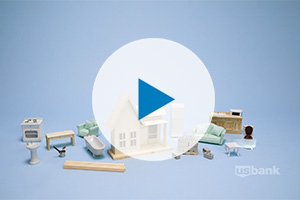
Webinar: Uncover the cost: Home renovation

Improving your credit score: Truth and myths revealed

Test your loan savvy

Credit: Do you understand it?

How to build and maintain a solid credit history and score

Should you give your child a college credit card?

Myth vs. truth: What affects your credit score?

Decoding credit: Understanding the 5 C’s

6 essential credit report terms to know

5 unique ways to take your credit card benefits further

What types of credit scores qualify for a mortgage?

What is a good credit score?

Car shopping: Buying versus leasing your next vehicle

U.S. Bank asks: What do you know about credit?

Credit score help: Repairing a bad credit score
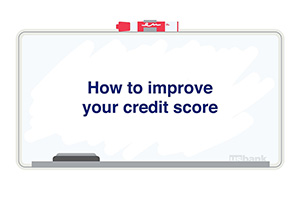
How to improve your credit score

What you need to know before buying a new or used car

How to choose the best car loan for you

How to winterize your vehicle

Questions to ask before buying a car

What you should know about buying a car


